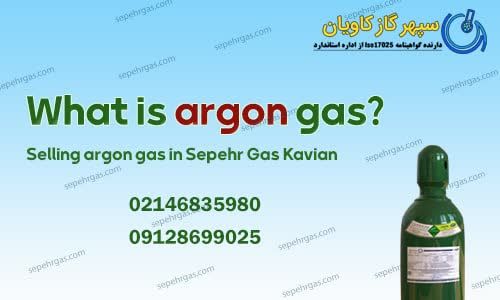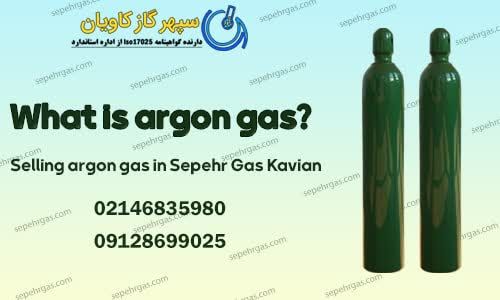?What is argon gas
Argon is a chemical element; it has symbol Ar and atomic number 18. It is in group 18 of the periodic table and is a noble gas. Argon is the third most abundant gas in Earth’s atmosphere, at 0.934% (9340 ppmv). It is more than twice as abundant as water vapor (which averages about 4000 ppmv, but varies greatly), 23 times as abundant as carbon dioxide (400 ppmv), and more than 500 times as abundant as neon (18 ppmv). Argon is the most abundant noble gas in Earth’s crust, comprising 0.00015% of the crust. Sepehr Gas Kavian has an ISO17025 certificate and is a reference laboratory of the Iranian Standards Authority. To buy pure and mixed gases, call 02146835980
Type: pure gas
Nearly all argon in Earth’s atmosphere is radiogenic argon-40, derived from the decay of potassium-40 in Earth’s crust. In the universe, argon-36 is by far the most common argon isotope, as it is the most easily produced by stellar nucleosynthesis in supernovas
The name “argon” is derived from the Greek word ἀργόν, neuter singular form of ἀργός meaning ‘lazy’ or ‘inactive’, as a reference to the fact that the element undergoes almost no chemical reactions. The complete octet (eight electrons) in the outer atomic shell makes this gas stable and resistant to bonding with other elements. Its triple point temperature of 83.8058 K is a defining fixed point in the International Temperature Scale of 1990
Argon is extracted industrially by the fractional distillation of liquid air. It is mostly used as an inert shielding gas in welding and other high-temperature industrial processes where ordinarily unreactive substances become reactive; for example, an argon atmosphere is used in graphite electric furnaces to prevent the graphite from burning. It is also used in incandescent, fluorescent
lighting, and other gas-discharge tubes. It makes a distinctive blue-green gas laser. It is also used in fluorescent glow starter

Production
Argon is extracted industrially by the fractional distillation of liquid air in a cryogenic air separation unit; a process that separates liquid nitrogen, which boils at 77.3 K, from argon, which boils at 87.3 K, and liquid oxygen, which boils at 90.2 K. About 700,000 tonnes of this gas are produced worldwide every year
Applications
this gas is a chemically inert gas
this gas is the cheapest alternative when nitrogen is not sufficiently inert
this gas has low thermal conductivity
this gas has electronic properties (ionization and/or the emission spectrum) desirable for some applications
Other noble gases would be equally suitable for most of these applications, but argon is by far the cheapest. It is inexpensive, since it occurs naturally in air and is readily obtained as a byproduct of cryogenic air separation in the production of liquid oxygen and liquid nitrogen: the primary constituents of air are used on a large industrial scale. The other noble gases (except helium) are produced this way as well, but argon is the most plentiful by far. The bulk of its applications arise simply because it is inert and relatively cheap
Industrial processes
this gas is used in some high-temperature industrial processes where ordinarily non-reactive substances become reactive. For example, an argon atmosphere is used in graphite electric furnaces to prevent the graphite from burning
For some of these processes, the presence of nitrogen or oxygen gases might cause defects within the material. this gas is used in some types of arc welding such as gas metal arc welding and gas tungsten arc welding, as well as in the processing of titanium and other reactive elements
Physical Description
Argon appears as a colorless odorless noncombustible gas. Heavier than air and can asphyxiate by displacement of air. Exposure of the container to prolonged heat or fire can cause it to rupture violently and rocket. If liquefied, contact of the very cold liquid with water may cause violent boiling. If the water is hot, there is the possibility that a liquid “superheat” explosion may occur. Contacts with water in a closed container may cause dangerous pressure to build
Preparation
To buy pure gases such as nitrogen, oxygen, hydrogen and helium, contact Sepehr Gas Kavian
02146835980
02146837072


بدون دیدگاه